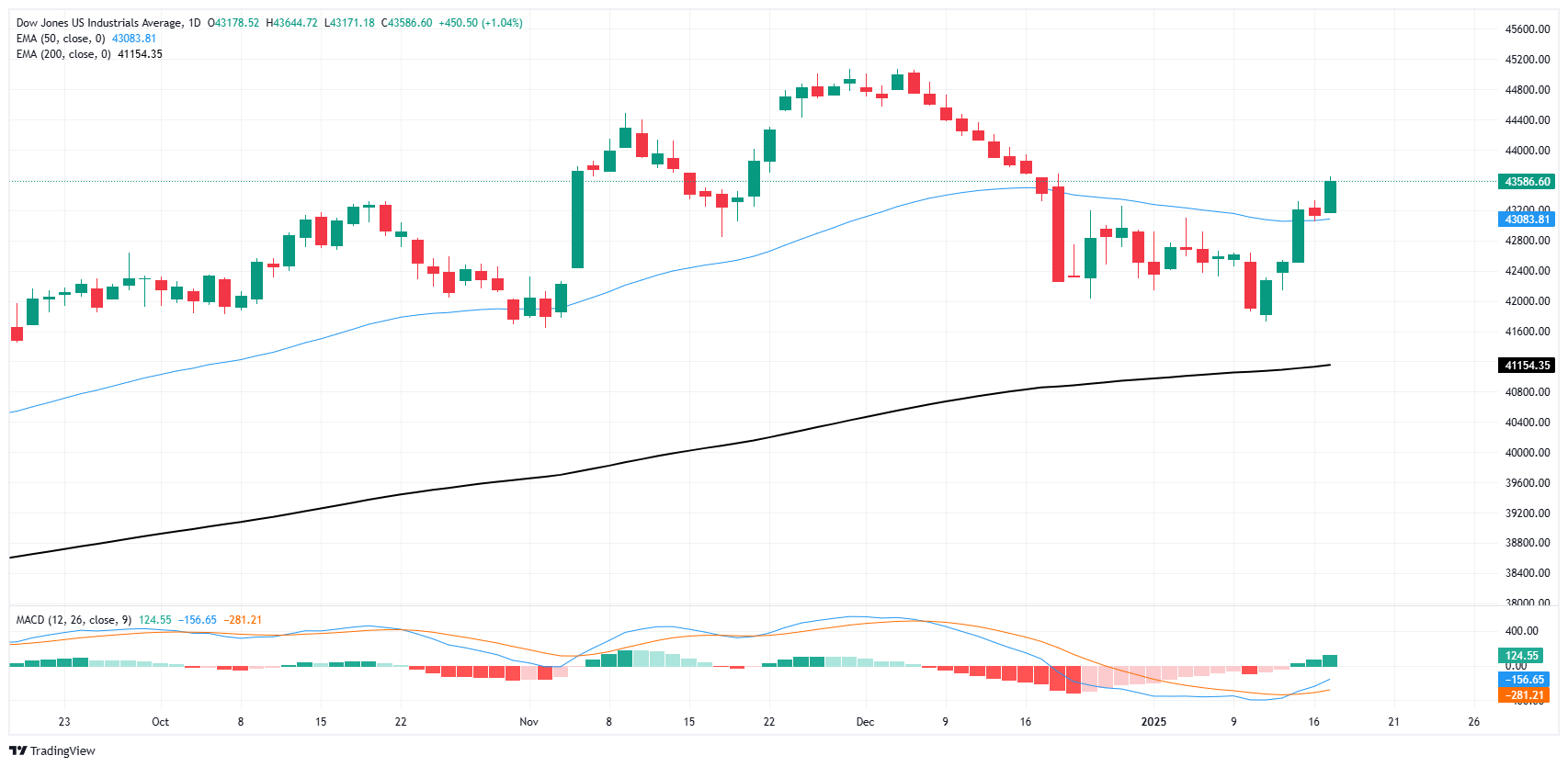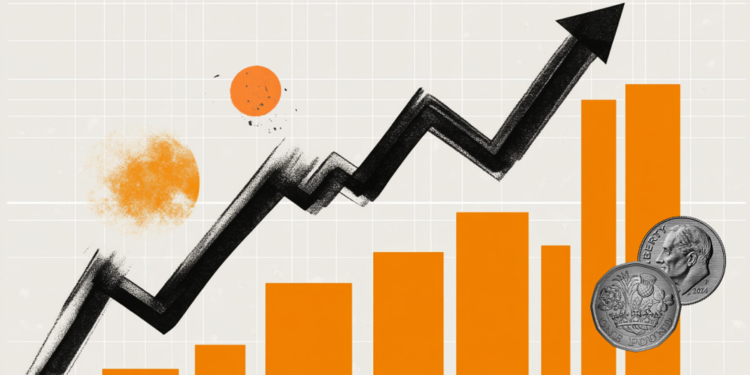- The Dow Jones extended a bullish rally on hopes of rate cuts.
- Inflation in the US remains above targets, but pressures may be easing slightly.
- Treasury yields are falling and rate cut bets are rising.
The Dow Jones Industrial Average (DJIA) added more than a percentage point in value on Friday, rising around 500 points and topping 43,500 again as market expectations for future rate cuts rose. Tech stocks are on the rise again as traders return to their risk appetite, and the banking sector is broadly rising after a series of better-than-expected earnings reports from major investment banks this week.
US President Donald Trump’s inauguration will take place next week, on Monday, when US markets will be closed for Martin Luther King Day. Stocks are set to continue the exuberance train for the time being. Trump’s election night victory in November sparked a massive rally as traders glimpsed a potential future with deregulation, lower taxes and higher stock valuations.
Leading inflation indicators gave enough room this week for Treasury yields to decline as investors look for signs of cooling inflation to reignite talk of rate cuts at the Federal Reserve (Fed). Although some segments of inflation accelerated recently, the numbers overall were below expectations, prompting markets to reassess the odds of a Fed rate cut in the first half of 2025.
According to the CME’s FedWatch tool, rates markets now see increased odds of a 25 basis point rate cut in May, with a second rate cut expected in December. Investor hopes for rate cuts took a hit as the new year began, with stock traders having to go through a period of adjustment after hopes of more than four rate cuts in 2025 were dashed this past December. .
Dow Jones News
Friday’s rally is firmly gripping the Dow Jones, with nearly every listed stock gaining ground on the day. Nvidia (NVDA) is on the rise again, rising 3% and hitting $138 per share once again, with Salesforce (CRM) rising another 2.5% to $328 per share.
Dow Jones Price Forecast
The bears simply can’t get anything good. The Dow Jones is back above the 50-day exponential moving average (EMA), and the bulls can now breathe a sigh of relief. The main stock index still has a long way to go to regain the all-time highs set above 45,000 last December, but bidders will be happy with a 4% gain in a single week.
Still, the short-term bull run cost a lot of ground on momentum oscillators, and buyers should not be surprised by any interim pullback as downward pressure becomes elastic. The immediate technical floor for the Dow Jones is set at 42,000, but there is still plenty of room to maneuver at the 50-day EMA near 43,100.
Dow Jones Daily Chart
Dow Jones FAQs
The Dow Jones Industrial Average, one of the world’s oldest stock indices, is made up of the 30 most traded securities in the United States. The index is weighted by price rather than capitalization. It is calculated by adding the prices of the securities that comprise it and dividing them by a factor, currently 0.152. The index was founded by Charles Dow, also founder of the Wall Street Journal. In recent years it has been criticized for not being sufficiently representative, since it only follows 30 companies, unlike broader indices such as the S& P 500.
There are many factors that drive the Dow Jones Industrial Average (DJIA). The main one is the aggregate performance of its component companies, revealed in quarterly corporate earnings reports. US and global macroeconomic data also contribute, influencing investor sentiment. The level of interest rates, set by the Federal Reserve (Fed), also influences the DJIA, as it affects the cost of credit, on which many companies largely depend. Therefore, inflation can be a determining factor, as well as other parameters that influence the decisions of the Federal Reserve.
The Dow Theory is a method for identifying the main trend of the stock market developed by Charles Dow. A key step is to compare the direction of the Dow Jones Industrial Average (DJIA) and the Dow Jones Transportation Average (DJTA) and only follow trends where both are moving in the same direction. Volume is a confirmation criterion. The theory uses elements of maximum and minimum analysis. The Dow theory proposes three phases of the trend: accumulation, when the smart money begins to buy or sell; public participation, when the general public joins the trend; and distribution, when the smart money abandons the trend.
There are several ways to trade the DJIA. One of them is to use ETFs that allow investors to trade the DJIA as a single security, instead of having to buy shares of the 30 companies that comprise it. A prominent example is the SPDR Dow Jones Industrial Average ETF (DIA). Futures contracts on the DJIA allow traders to speculate on the future value of the index, and options provide the right, but not the obligation, to buy or sell the index at a predetermined price in the future. Mutual funds allow investors to purchase a portion of a diversified portfolio of DJIA securities, providing exposure to the global index.
Source: Fx Street
I am Joshua Winder, a senior-level journalist and editor at World Stock Market. I specialize in covering news related to the stock market and economic trends. With more than 8 years of experience in this field, I have become an expert in financial reporting.







